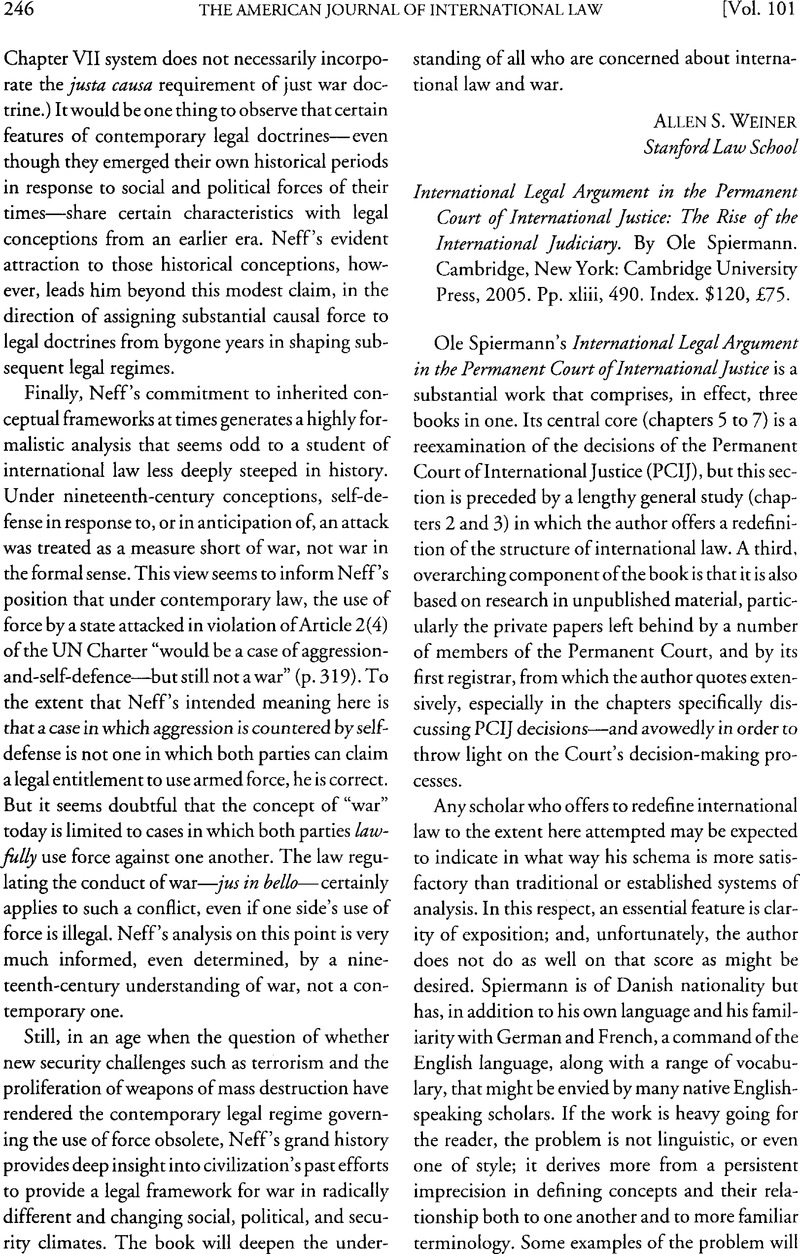No CrossRef data available.
Published online by Cambridge University Press: 27 February 2017

1 Wolfgang, Friedmann, The Changing Structure of International Law 251 (1964)Google Scholar.
2 S.S. Wimbledon (Ger. v. UK, Fr., Italy, Japan), 1923 PCIJ (ser. A) No. 1, at 15 (Aug. 17).
3 S.S. Lotus (Fr./Turk.), 1927 PCIJ (ser. A) No. 10 (Sept. 7).
4 Spiermann has dealt with this matter more extensively in his article Lotus and the Double Structure of International Legal Argument,” in International Law, The International Court of Justice and Nuclear Weapons 131, 132–36 (Laurence Boisson de Chazournes & Philippe Sands eds., 1999).
5 For a clearer discussion of this point, see id. at 133.
6 This issue may be considered a rather delicate one for the present reviewer, author of a long series of articles on the jurisprudence on the present Court, many published while he was a senior official of the Court. However, the reviewer has always been careful to emphasize that these articles, published in his own name, ate not based on inside knowledge. The semi–transparent pseudonyms employed by Hammarskjold seem to have enabled him to put his own authoritative “spin” on a Court decision by reference to the deliberation—or to the side in the deliberation that he favored—while posing as an independent scholar. (For an interesting example of his use of this technique, see Spiermann’s discussion at pp. 157–58.)